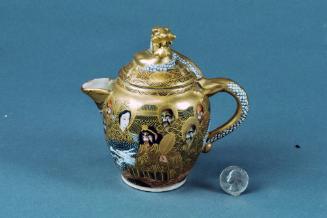Imari Bowl
Datelast quarter 19th Century
CultureJapanese, Imari-Arita
MediumPorcelain, Underglaze blue and Overglaze gold with enamels
ClassificationCeramics
ProvenanceCorinne M. Nutto, n.d.-1978; donated to the John and Mable Ringling Museum of Art, 1978-present.
Credit LineGift of Mrs. Corinne Nutto, in memory of Joseph Nutto, 1978
Object numberSN7428
This is an example of Arita-Imari porcelain with a brocade background. The name refers to porcelain that was produced in the region of Arita specifically for export and shipped overseas from the port town of Imari on the island of Kyushu. Arita-Imari ware originally possessed similar designs and patterns as blue-and-white ceramics from China. In 1660, Japanese porcelain was exported to the Netherlands, and it quickly became popular in Europe and appreciated in its own right. 50 years later, Western consumers showed an increased interest in polychrome enameled wares, and Imari porcelain focused on these colorful, elaborately decorated designs. At the 1867 World Exhibition in Paris, a large Imari jar was prominently displayed, igniting a passion for the porcelain in European collectors that remains undiminished to the present day.
On View
Not on view19th Century








